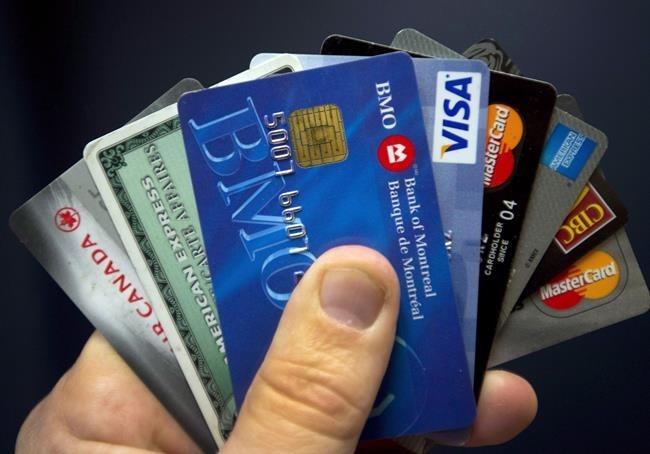About a year ago, Matt Brownlow started putting all of his expenses on a Tangerine money-back credit card as a way to get the most out of its cash-back rewards. He then pays the balance off at the end of each month.
The 33-year-old mortgage broker at Mission35 Mortgages in Burlington, Ont., ditched his previous President’s Choice points card in favour of a cash-back card so he could use rewards as “treat money.”
“If there’s something that I’m saving up for, I might set that cash-back money aside. With Tangerine, it’s great because it can go into a separate savings account. Last month, I bought a food processor with that money because I had been eyeing one of those,” he said.
“I’ve also used that money to put into my Questrade account. I just deposit it right when it gets to a certain amount … I can put that into an exchange-traded fund and watch that money grow a heck of a lot faster.”
Among credit card holders, 78 per cent say they most frequently use a card that provides some kind of reward, according to Ratehub.ca’s recently published 2021 Digital Money Trends Report. Cash-back rewards were found to be the most popular (54 per cent), followed by store credit (25 per cent) and travel reward cards (23 per cent).
“Cash-back offerings have never been more attractive in Canada than they are now and there’s also never been more people looking for cash-back credit cards,” said Mikael Castaldo, general manager of everyday banking at Ratehub.ca.
"(They’re) appealing for everyday use because you can earn a significant sum in cash back over time, especially if you use your card regularly to pay for specific items or recurring bills.”
Brownlow, who recently spent eight months doing home renovations, set his Tangerine card's spending categories to home improvement, furniture and grocery to get the most out of his recent purchases.
The card offers two per cent cash back in three categories of his choice – other options include restaurants, gas and parking – and all other spending gets 0.50 per cent cash back, with the money deposited into his Tangerine savings account. Card holders without an account with the bank qualify for the higher discount on two categories rather than three, with the cash back directly on their credit card.
Cash-back rewards at other financial institutions follow a variety of models, whether using a points system that includes cash-back options or partnerships with specific gasoline or grocery chains offering higher rewards than the baseline.
The straight-ahead cash-back rewards allow you maximize your savings in a way that points might not, Castaldo said.
“You can set it up so your cash back automatically goes into your savings or chequing account and treat that as another savings benefit.”
Cash-back rewards are also attractive because of their simplicity.
“It’s extremely clear the rate of return that you’re getting versus some of these points programs that can be convoluted. And that transparency seems to resonate with a lot of people,” he said.
Another advantage they have, particularly over points cards, is that you get your reward down to the dollar. In comparison, people may not always use all of their points in other types of reward cards.
“That’s kind of exciting for a lot of people because you don’t have this awkward amount of points that you never use at the end of the year,” he said.
The drawback, in comparison to other rewards cards, is that if you were to maximize your points on a points card, you would typically get more value than you would with a pure cash-back card.
That’s because financial institutions that control the points values assume that you’re not spending all your points, he explained.
“They have this huge points balance that they carry on their books every year so they can afford to be more generous knowing that people aren’t always going to use it. With cash back, on the other hand, people almost always take their entire balance down to the last dollar every year.”
For Canadians looking to sign up for a cash-back reward card, Castaldo recommends always reading the fine print.
“A lot of credit cards can have exciting welcome offers but then those offers will fade after six months,” he said.
The best way to get the most “bang for your buck,” he adds, is to go online and research the details of each card.
Ratehub’s findings were based on an online survey of 1,527 Canadians, completed between Aug. 20 and 22, 2021, using Leger’s online panel.
This report by The Canadian Press was first published March 8, 2022.
Leah Goleb, The Canadian Press



